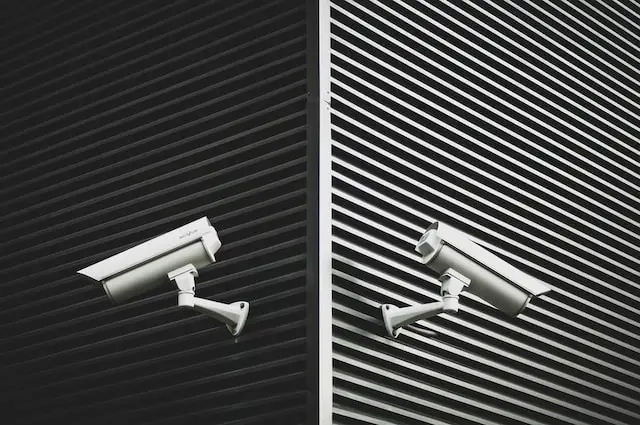The Internet of Things (IoT) is revolutionizing how we live and work. Smart buildings are at the forefront of this revolution, using sensors and data to improve efficiency and occupant comfort. However, as buildings become more connected, they also become more vulnerable to cyber-attacks.
In recent years, cyberattacks have been on the rise. This is especially true for attacks on critical infrastructures, such as power plants and water treatment facilities. While these attacks have always been a concern, the increased use of connected devices in critical infrastructure has made them even more vulnerable.
This post explores why cyber security is essential for smart buildings and how to protect them from attack.
Why Cybersecurity Is Important For Smart Buildings And Cities?
As our world becomes increasingly digitized, it’s more important than ever to ensure that our digital infrastructure is secure. This is especially true for smart buildings and cities increasingly reliant on interconnected digital systems. Cybersecurity breaches can have devastating consequences, from disrupting critical services to exfiltrating sensitive information and even compromising the safety of residents.
That’s why cybersecurity is such an important issue for smart buildings and cities. By taking steps to secure their digital systems, they can help protect against potential attacks and ensure that their residents are safe.
In other words, the vulnerability landscape is vast and growing. Now more than ever, it’s crucial for organizations to prioritize cybersecurity in the planning and implementation stages of their smart building or city initiatives.
Here are key reasons why:
1 | Smart Buildings Are an Attractive Target
Smart buildings are an attractive target for attackers because they usually house sensitive data and control critical systems. These systems are often not well-protected, making them easy targets. Unfortunately, as the number of connected devices in buildings continues to grow, the attack surface expands, increasing the possibility that bad actors will be able to find and exploit vulnerabilities. Moreover, smart buildings are connected to various systems, making them vulnerable to attack.
2 | Attacks Are on the Rise
Unfortunately, cyberattacks on buildings and cities are becoming increasingly common – and sophisticated. A recent IBM report found that nearly half of the surveyed organizations experienced at least one attempted or successful cyberattack. And as IoT devices become more prevalent in today’s connected buildings and cities, bad actors have even more opportunities to exploit vulnerabilities and wreak havoc. For example, a Mirai botnet attack took down many major websites in Liberia in 2016 by intermittently knocking most of the nation offline.
Moreover, a recent report from Microsoft found that the number of cyberattacks has doubled in the last two years. And as our world becomes increasingly interconnected, these numbers will likely continue to rise.
3 | The Costs of an Attack Are Skyrocketing
Cyberattacks can have a major impact on operations, finances, and reputation. The average cost of a data breach is now $ 4.24 million. And for smart buildings, the costs can be even higher due to the intricate web of connected systems and devices. During a ransomware attack on a smart building, for example, the hackers could disable elevators, locks, and alarms, preventing people from being able to enter or exit the building safely.
A major cyberattack can cost a company millions of dollars. For example, the NotPetya ransomware attack in 2017 is estimated to have cost Maersk, one of the world’s largest shipping companies, upwards of $300 million.
4 | The Consequences of an Attack Can Be Extremely Disastrous
A successful cyberattack can have severe consequences, ranging from downtime and lost productivity to data breaches and damaged reputations. In some cases, attacks can even lead to loss of life. For example, hackers who took control of a hospital’s network in 2016 forced doctors to cancel life-sustaining surgeries.
18 USB drives were brought into a hospital. Within 24 hours, at least one had infected a nurse’s station with malware after being plugged in. Soon, hackers could access the hospital’s network and seize control of the equipment used to dispense medications. They could have triggered hundreds of overdoses if they wanted; death was just a key away.
5 | Your Reputation Is at Risk
In today’s connected world, a cyberattack can quickly become front-page news. And as we’ve seen time and again, the fallout from a data breach or other security incident can devastate an organization’s reputation.
6 | Compliance Requirements Exist
Depending on the type of data your organization collects and stores, you may be subject to compliance requirements such as the General Data Protection Regulation (GDPR) or the Health Insurance Portability and Accountability Act (HIPAA). These regulations stipulate specific security measures that must be in place to protect sensitive data, so it’s important to ensure your cybersecurity strategy aligns with any relevant compliance requirements.

What Can Happen To Smart Buildings Without Good Cybersecurity?
In a world increasingly dependent on technology, it’s important to consider the implications of poor cybersecurity. After all, what could happen to our smart buildings and smart cities if hackers took them over?
The possibilities are truly frightening.
Cyber attacks on smart buildings and cities can have various devastating effects. Smart buildings could be used to spy on occupants or even potentially even endanger lives. Meanwhile, hackers could use smart cities to wreak infrastructure havoc or create widespread panic.
There are many ways that cyber attacks on smart buildings could endanger lives.
- For example, attackers could gain control of critical infrastructure, like power grids and water treatment plants. If the heating and cooling system was hacked, it could be used to create extreme temperatures that would be dangerous for occupants.
- Attackers could gain control of the building’s systems and use them to cause a power outage or tamper with the building’s fire alarms and sprinklers. They could even disable the building’s security systems, including security cameras, making it easier for criminals to break in, putting those inside at risk.
- In a worst-case scenario, cyber attacks could even lead to loss of life.
As a result, it’s become more important than ever to beef up cybersecurity in smart buildings.
Different Solutions To Improve Cybersecurity In Buildings
There are ways to protect against these types of attacks. By hardening the systems and increasing security protocols, we can make it much more difficult for hackers to gain access to smart buildings.
- A robust security system is the best way to protect against these attacks. This includes things like firewalls, intrusion detection, and incident response plans.
- Another way to improve the cybersecurity of smart buildings is to use secure protocols for communication between devices.
- Another solution is to deploy security measures at the device level, such as encryption and access. As a result, attackers may have a harder time accessing data, even if they can gain access to the network.
Implementing these measures can help to make smart buildings more secure and less vulnerable to cyberattacks.

Pros And Cons Of These Solutions
There are many potential solutions to improve security in buildings, but each has pros and cons.
1 | Security Cameras
Pros: Security cameras can be a great way to monitor activity in and around your building. They can also deter potential criminals, as they will know that they are being watched. Cameras can also help investigate crimes that have already been committed.
Cons: Cameras can be expensive to install and maintain. They can also invade the privacy of your employees and tenants. Additionally, cameras can be hacked and used to spy on people if not properly secured.
2 | Firewalls
Firewalls can be very effective in blocking unauthorized traffic from accessing your network. However, they need to be properly configured to be effective, which can be time-consuming and difficult. Additionally, firewalls can sometimes block legitimate traffic if they are not configured correctly.
3 | Intrusion Detection
Intrusion detection systems can help identify suspicious activity on your network and raise alerts to take appropriate action. However, these systems can generate a lot of false positives, which can be costly and time-consuming to investigate. Additionally, intrusion detection systems require ongoing maintenance and tuning to be effective.
4 | Incident Response Plans
An incident response plan can help you quickly and effectively deal with security incidents. These plans should be regularly reviewed and updated to remain relevant and fit. Additionally, all staff should be trained on the incident response plan to know what to do during a security incident.
5 | Access control systems
Another solution is to use access control systems to limit who can enter a building. This can reduce the risk of unauthorized people gaining access to sensitive areas, but it can also be inconvenient and may not be 100% effective.
6 | Encryption
This can effectively protect data at rest and in transit. Furthermore, it is not easily circumvented. However, they can be costly to implement and manage and require specialized skills to set up and maintain properly.
Conclusion
Smart buildings are becoming increasingly common, but they are also becoming increasingly vulnerable to cyber-attacks. A successful cyber attack on a smart building can be disastrous, affecting not just the building but also the people who rely on it.
Cybersecurity must be a top priority for smart building owners and operators to protect their assets and occupants.
If you want to learn more about commercial real estate, PropTech, smart buildings, and sustainability, feel free to take a look at out other articles.

